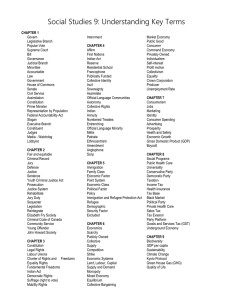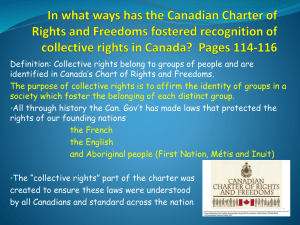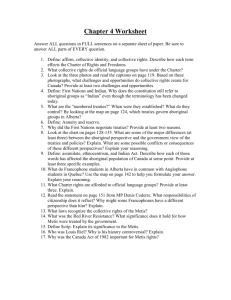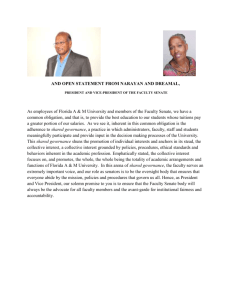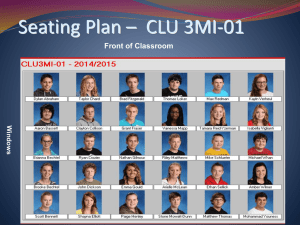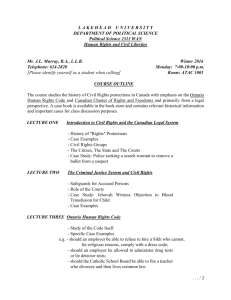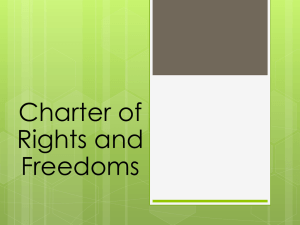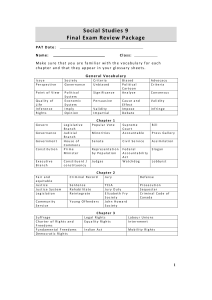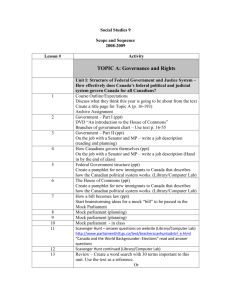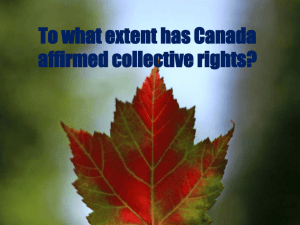GRADE 9 SOCIAL STUDIES – MIDTERM STUDY GUIDE
advertisement
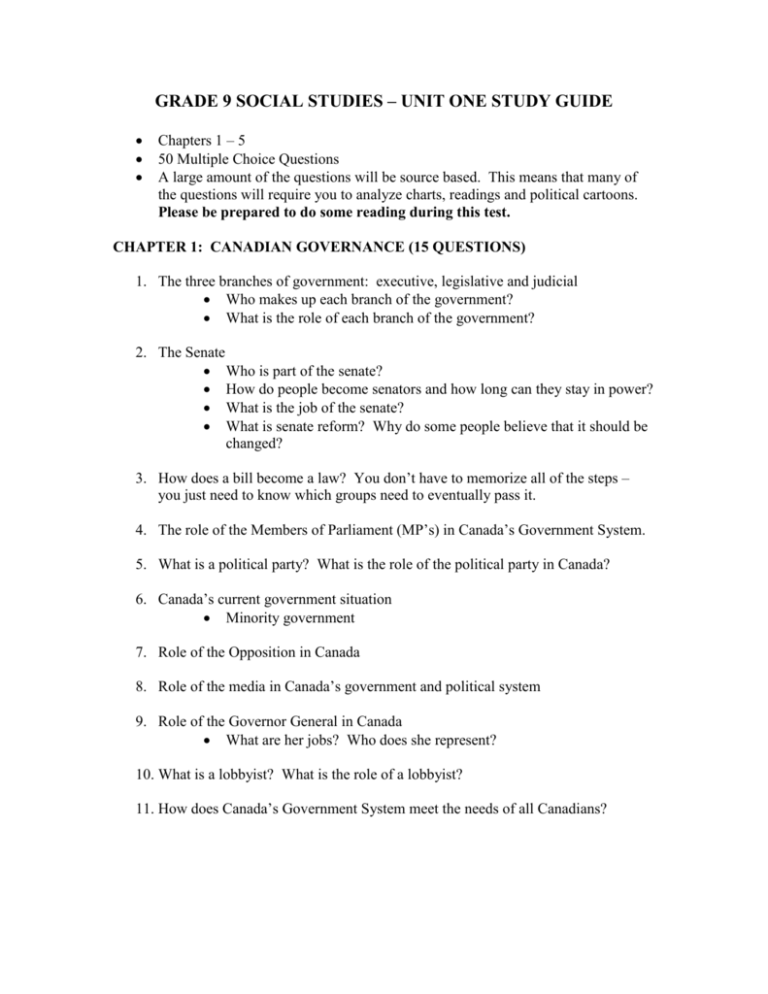
GRADE 9 SOCIAL STUDIES – UNIT ONE STUDY GUIDE Chapters 1 – 5 50 Multiple Choice Questions A large amount of the questions will be source based. This means that many of the questions will require you to analyze charts, readings and political cartoons. Please be prepared to do some reading during this test. CHAPTER 1: CANADIAN GOVERNANCE (15 QUESTIONS) 1. The three branches of government: executive, legislative and judicial Who makes up each branch of the government? What is the role of each branch of the government? 2. The Senate Who is part of the senate? How do people become senators and how long can they stay in power? What is the job of the senate? What is senate reform? Why do some people believe that it should be changed? 3. How does a bill become a law? You don’t have to memorize all of the steps – you just need to know which groups need to eventually pass it. 4. The role of the Members of Parliament (MP’s) in Canada’s Government System. 5. What is a political party? What is the role of the political party in Canada? 6. Canada’s current government situation Minority government 7. Role of the Opposition in Canada 8. Role of the media in Canada’s government and political system 9. Role of the Governor General in Canada What are her jobs? Who does she represent? 10. What is a lobbyist? What is the role of a lobbyist? 11. How does Canada’s Government System meet the needs of all Canadians? CHAPTER 2: JUSTICE (10 QUESTIONS) 1. Canada’s two systems of legal codes: Youth Criminal Justice Act and the Criminal Code of Canada 2. What are the characteristics of each of these two systems of justice? What makes the two systems different? 3. The goals of the Youth Criminal Justice Act 4. Sentencing for youth: Fair and equitable (what does this mean)? What factors influence the sentencing of youth? 5. What are justice advocacy groups? How do they play a role in youth criminal justice? What are some examples? 6. What is jury duty? Which Canadian citizens are involved? CHAPTER 3: CANADIAN CHARTER OF RIGHTS AND FREEDOMS (10 QUESTIONS) 1. What is a constitution? What is Canada’s Constitution? 2. What are Fundamental Freedoms? What are some examples? 3. What is a union? How is union membership reflected in the charter? 4. Know the characteristics of the following rights: democratic, mobility, legal, equality, fundamental freedoms, minority language, and minority language education. 5. Know the main issues related to the following cases: Maher Arar, the government no fly list, banning junk food advertisements, women’s suffrage movement and the internment of ethnic groups during periods of war. What rights are violated in these issues? How do the Canadian Charter of Rights and Freedoms relate to these issues? 6. What is the relationship between rights and responsibilities? CHAPTER 4: COLLECTIVE RIGHTS IN CANADA (11 QUESTIONS) 1. What groups in Canada are given collective rights? Why do these groups get collective rights? What historical factors influenced these groups to receive collective rights? 2. The Aboriginal battle for self-governance Why do the First Nations feel that their collective rights are not being met? What laws impact the First Nations: Treaties 6, 7 and 8, the Constitutional Act of 1982 and the Indian Act? What are the Numbered Treaties? Who were these agreements between? European and Native Perspectives of the Treaties 3. The Metis of Canada What historical factors influenced the Metis to receive collective rights? What legislation and rights have been given to the Metis? What rights are the currently still fighting for? 4. What rights have been given to Francophones in minority settings and in Quebec? Anglophone/Francophone Minority language education rights – Section 23 of the Charter Bill 101 CHAPTER 5: IMMIGRATION (4 QUESTIONS) 1. 2. 3. 4. 5. Immigration classes – a description of each class Immigration classes – percentage of people in each class Why Canada accepts immigrants Frustrations for immigrants coming to Canada Issues related to immigration
